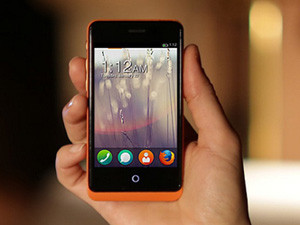
Mozilla has revealed the first official phones to run the Firefox mobile operating system. The handsets will be made available for purchase to developers in February.
Mozilla first revealed its intentions to build its own fully open, HTML5-based OS for smartphones and push against the siloed nature of existing mobile platforms in February last year, under the project name "Boot 2 Gecko".
The browser maker released a beta version of its Firefox OS simulator in December last year, and now the new handsets are the first real-world pieces of hardware to be built to run the Firefox OS.
The OS offers a new phone architecture whereby every phone feature (calling, messaging, games and so on) is an HTML5 application. The first handsets, named the Keon and the Peak, have been built by Spanish start-up Geeksphone (in partnership with Telefonica).
The Keon is a lower-end handset with a 3.5-inch HVGA multi-touch display (with a resolution of 480x320 pixels), 3MP rear camera, Qualcomm 2GHz Snapdragon S1 processor, 512MB of RAM and 4GB included storage. It also features a microSD card slot and will run on 2G and 3G networks.
The Peak model offers some higher-end specs with a 4.3-inch display (with a resolution of 960x540 pixels), 8MP rear camera, 2MP front-facing camera and Qualcomm's latest Snapdragon S4 processor. It has the same storage capacity as the Keon, and also has a microSD slot and 2G and 3G connectivity.
Free ecosystem
Mozilla's director of Web sites and developer engagement, Stormy Peters, says: "Developer preview phones will help make the mobile Web more accessible to more people. Developers are critical to the Web and to Mozilla's mission to make the Web accessible to everyone."
According to Mozilla, the motivation behind developing the Firefox OS is to bring the "power of the Web to mobile". According to Peters, with the Firefox OS it is easy to create an app based on HTML that has access to all of the APIs on the actual device.
"Using the same Web technologies you are used to, you can make your app give alerts by vibrating the phone, take a picture with the camera or more," says Peters, adding that developers can create apps for Firefox OS by making small changes to an existing Web site.
Peters says with Firefox OS, developers are not locked in to a vendor-controlled ecosystem. "You can distribute your app through the Firefox Marketplace, your own Web site, or any other store based on Mozilla's open app store technology."
Developing markets
In July last year, Mozilla said the Firefox OS would "power the launch of smartphones built entirely to open Web standards" and deliver compelling smartphone experiences at attainable prices.
"Due to the optimisation of the platform for entry-level smartphones and the removal of unnecessary middleware layers, mobile operators will have the ability to offer richer experiences at a range of price points including at the low-end of the smartphone price range, helping to drive adoption across developing markets," said Mozilla.
Mozilla CEO Gary Kovacs also said at the time: "As billions of users are expected to come online for the first time in the coming years, it is important to deliver a compelling smartphone experience that anyone can use."
The exact launch date and pricing of the developer preview handsets has not been announced. In the meantime, Mozilla will host a series of Firefox App Days in more than 20 locations (SA not included) around the world. Most of these App Day events will take place on 26 January, with a few exceptions.
Share